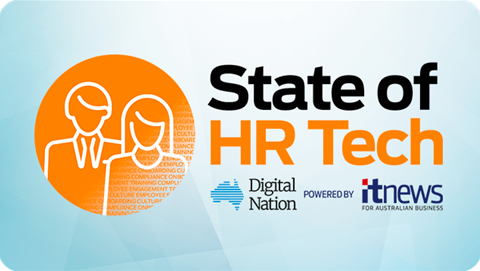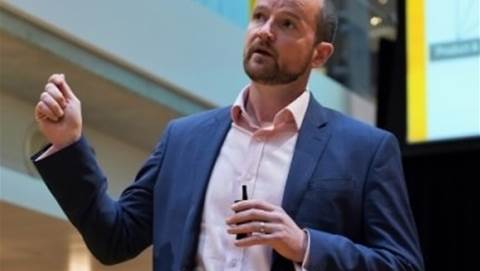Since early 2018, PwC Australia has given all 730 of its partners a digital fitness assessment. By the end of 2019 95 percent of its 7500 Australian staff will also have been assessed, and 80 percent of all staff will be actively improving their fitness under tailored programs delivered through “Digital Academies”.

Next will come a “digital marketplace” to be called the Digital Lab, in which staff put their Digital Academies training to good use, sharing ideas, automation, workflows and other creations with everyone across PwC - so that the whole organisation is able to benefit from the innovation that flows from its digital enablement investments.
“What we want to do is to actually make it accessible to the entire organization rather than just you or your team, and so the Lab is infrastructure that we're creating that allows you, as a creator of that idea, to put it up,” says PwC Australia partner and chief digital officer Vishy Narayanan says.
“It has a social construct so if your team members like it, they'll promote it in the lab, and other teams within PwC can see it. And if 30 people download it, then you get 30 credits for the use of the Lab, and that could be through a reward mechanism or kudos/ credit points, etc.
“That's a critical part of our strategy - to democratise and make sure that all the innovations that people come up with don’t just sit on a desktop of an individual or team.
“We can actually scale the benefits out.”
PwC is far from alone in pursuing this sort of thing and it’s not hard to see why: professional services firms are often called in to create - and in many cases, implement - digital strategies for their own clients. Therefore, it makes sense for the firms themselves to be well-versed in digital.
“We get invited into boardrooms and into lots of discussions primarily based on trust and our ability to take a combined set of skills and solve some fairly hairy problems for our customers,” Narayanan says. “That's the heritage of a professional services organisation.”
Still, Narayanan - who is PwC Australia’s first ever chief digital officer - believes professional services firms face challenges keeping up with the pace of digital - in order to then be positioned to advise others.
“I sort of coined the term for this within PwC - I call it the ‘authenticity gap’ between what we preach and what we practice ourselves, and nowhere is that gap more starkly felt than in technology and digital,” Narayanan says.
“It's not because of lack of willingness or appetite - it's just the physical capacity to stay ahead of the curve when technology moves at such a rapid pace.
“Two years ago, analytics-as-a-service was not even in the vernacular, yet today our clients not only expect us to have that service, but also expect us to be really good at it.”
Thankfully for Narayanan, and PwC Australia more broadly, a critical mass of the partner group understood the challenge that lay in front of the company - and decided to confront it.
And to do so repeatedly: after staff pass through Digital Academy they are asked to complete the DFA again, with a view to measuring improvement. That is likely to lead to additional training opportunities, and so the cycle continues; rinse-and-repeat.
Pay attention

The Commonwealth Bank’s Business Insights series finds that professional services employees and decision-makers “understand the need to reskill to support business growth, keep up with market changes and to drive efficiency and productivity.”
However, in a survey released earlier this year, CommBank found that “only 49 percent of employees believe that their firms make full use of their skills and capabilities”.
This appeared to happen in part due to a mismatch between what employees considered to be their strengths, and what skills were actually in-demand from decision-makers.
In that way, standardised capability assessments, combined with personalised training programs like those offered at PwC Australia, could offer a good way to bridge that gap.
EY is pursuing a similar model across Asia Pacific.
“We've been on a digital journey ourselves the last few years, both in terms of shifting the range of services we offer to clients and embedding digital in them, and in terms of internal skill sets and capabilities,” says EY Asia Pacific digital leader and partner Will Duckworth (pictured above).
The company is embedding digital skills both by looking for them in new hires and training its existing workforce.
“We've rolled out a program across EY that provides a minimum of two days training for every single one of our employees across agile, analytics and design thinking, giving them the basic capabilities they need,” Duckworth says,
“Whatever their job is, we believe they all need a fundamental understanding about agile ways of working, the power of analytics, and solving problems through design thinking.”
As of mid-August 2019, more than 5000 EY employees across Asia Pacific had passed through the program, which is known as the ‘Agile & Design Thinking Bootcamp’.
“It's quite a significant investment on our part in our employees and changing the ways that we work,” Duckworth says.
Chief what?

The large-scale enablement programs in professional services are in many ways the result of the evolution of digital.
“I think going back 10-15-20 years, digital was all about channel. It was all about web, and mobile so it was a channel play, and that's why it really sat in the hands either of the Chief Information Officer (CIO) - to build out this complex new technology - or in the hands of the Chief Marketing Officer (CMO), because channels belong to the CMO,” EY’s Duckworth says.
“The truth is now, all aspects of your business needs to look at the impact of digital, not just the channels themselves. Every aspect of the business is inherently impacted.”
Duckworth says this is noticeable in client engagements where there is often “broad buy-in to the digital agenda across the C-Suite and even the board”.
“There might be delegated ownership to a Chief Digital Officer, Chief Marketing Officer, Chief Customer Officer, whatever it may be. But we find in organisations that only rely on that model, it can lead to some siloed digital behaviours and not complete buy-in,” he says.
Duckworth also predicted that the days of the CMO holding most of the ownership of digital are likely numbered.
“I think we are seeing a shift in the market at the moment away from the CMO,” he says.
“The CMO has typically obviously been responsible for marketing, which is just one crucial touchpoint with the end consumer. So we're seeing a shift away from the CMO in regards to digital transformation.
“Some of the big global consumer brands are actually scrapping the role of the CMO and looking at a more holistic Chief Digital Officer role, and even locally we've seen - with one of the banks - a consolidation of customer, digital, marketing and technology rolled into one group.”
EY is pushing a much broader reach for digital in its own consulting engagements.
“We very much believe and we advise our clients that digital is something that you infuse in your current business,” Duckworth says.
“it's no longer something you build out on the side as a separate thing, just as digital is no longer a channel that you bolt onto your backend systems and processes.
“Digital capability needs to be infused in every aspect of your operations.”




.png&h=140&w=231&c=1&s=0)
_(22).jpg&h=140&w=231&c=1&s=0)



_(26).jpg&w=100&c=1&s=0)

 iTnews Executive Retreat - Security Leaders Edition
iTnews Executive Retreat - Security Leaders Edition












_(1).jpg&h=140&w=231&c=1&s=0)



